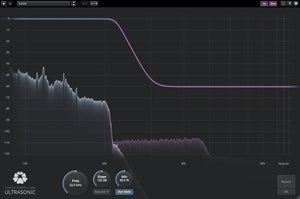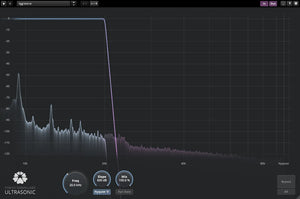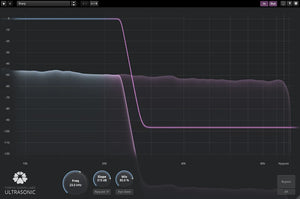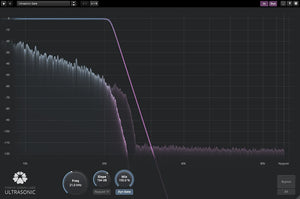Your Cart is Empty




Tokyo Dawn Labs TDR Ultrasonic
A filter designed to control the accumulation of ultrasonic content
TEST4b
$0.00$30.00Rated 5.0 out of 5 stars
1 Review
Description
TDR Ultrasonic is a filter designed to control the accumulation of ultrasonic content in oversampled recording, processing, or playback chains. The idea is to prevent ultrasonics from running into nonlinear systems.
Examples of nonlinear systems are peak limiters, creative distortion devices, compressors, and other forms of modulation. Analog capture devices such as tape recorders and disc cutting systems also exhibit nonlinear behavior, as do all playback systems (albeit to a lesser degree).
The total distortion produced by a nonlinear system grows with the incoming signal bandwidth. This is true for both audible and inaudible content, and applies throughout production: While a narrow-band monophonic signal such as guitars or vocals can artistically handle huge amounts of distortion, a wideband mix can audibly fall apart with only the slightest amount of saturation.
This is because nonlinearities not only produce harmonic distortion but also intermodulation distortion, a largely non-harmonic type of distortion. This form of IMD distortion produces new partials at the sum and difference of the original partials’ frequencies. As a result, these new partials end up beyond and below the source frequencies, with the latter possibly ending up in the audible bandwidth..
TDR Ultrasonic controls the same effect, on a larger scale. It allows for losslessly reducing the amount of intermodulation distortion otherwise provoked by ultrasonic content running into nonlinear devices.
A freely resizable user interface provides intuitive access to all traditional filter parameters and a set of exotic tricks such as a dynamic ultrasonic gate, the enforcement of infinite attenuation at Nyquist, and a neat “Bypass All” function allowing for A/B testing of the effect of ultrasonic filters over whole mixes. A precise ultrasonic frequency analyzer gives detailed insight into the ultrasonic spectrum and the filtering in action.
Notable Features
- Linear phase, continuously variable slope filtering
- Ultrasonic gate
- Support for samplerates up to 20 Mhz
- Freely resizable hardware accelerated user interface, full-screen capable
Tech Specs
System Requirements
- VST2, VST3, Audio-Unit or AAX compatible plugin host.
- Win 7 or above, Mac OS X 10.9 or above. OpenGL support.
Plugin Formats
- macOS formats 64bit: VST2, VST3, AU, AAX
- Windows formats 32bit: VST2, VST3
- Windows formats 64bit: VST2, VST3, AU, AAX







